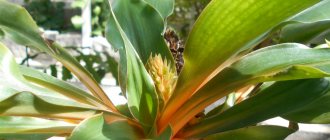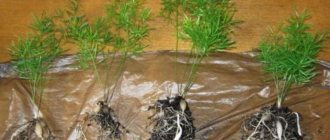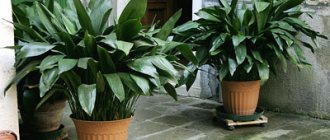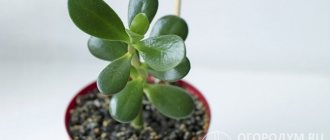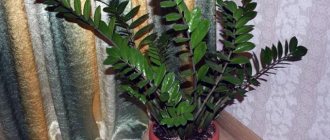It is no coincidence that Cereuses are considered one of the most common indoor and greenhouse cacti. Combining ease of growing with classic forms, cereus allows everyone to find their favorite. In trendy succulent gardens, modest little pots, deserted florariums, these minimally watered cacti are a reliable choice for succulent fans and for those who want to decorate the interior with plants, but are not ready to devote special attention to them.
Cereus are the ideal cacti for the lazy. © fvk1994
Description of the plant
Cereuses have been divided, reclassified, and transferred so many times that from the once huge genus of cacti, including dozens of species, only fifty cacti remain, easily recognizable by one single feature - cylindrical ribbed stems. Cereuses are often underestimated, considered just rootstocks for more showy cacti. But these large, fast-growing, versatile species are good on their own.
Cereuses are creeping and shrubby, low and tall. They change with age, transforming from one cylinder into bizarre groups and crowns. Large cereus plants in nature flaunt a pronounced trunk and crown, but in rooms, if they produce side shoots, they do so either from the base or creating beautiful tree-like silhouettes. The maximum size is limited only by the time and space that you are willing to provide the cereus.
All cereus retain their easily recognizable features. They are characterized by fairly powerful roots and columnar, straight, powerful cylindrical stems with large, deep ribs, on which spines stand out clearly. The bluish, light, muted color of the stems contrasts well with the brown, black and gray “needles”.
Cereus flowering is one of the most beautiful among cacti. Large, up to 25 cm long, white, light green or pink flowers seem massive and bright. They bloom at night, surprising with vanilla aroma. But enjoying the flowering of cereus from May to June in rooms is not easy, because you need to wait for decades, and old cacti without sufficient access to fresh air and bright light almost never bloom.
Cereus has edible fruits. But it is better not to rush to feast on bare berries that have not reached the “ripe” red color from home cacti.
Cereus validus. © Süleyman
Steelhead cereus (Cereus chalybaeus). © bracti
Rocky cereus, or Peruvian (Cereus repandus), Florida form. © Eddington House Nursery
Photo
In the photo you can see bright representatives of the Cereus cactus species, such as Peruvian , Monstrous (rocky shape) :
Types of indoor cereus
Of the less than 50 species of cacti that remain in the vast genus Cereus, only 4-5 plants are used as decorative indoor species.
Cereus validus is a bulky, large species that forms powerful groups of 5-8 shoots on the sides of the central stem. The light, delicate, bluish tint and soft outlines of the ribs create a feeling of meatiness.
Steel cereus (Cereus chalybaeus) is a massive species with stems up to 10 cm or more in diameter, growing straight, surprising with the delicate blue tint of thick ribs and amazingly dense areoles with numerous spines.
Rocky cereus, or Peruvian (Cereus repandus) is a beautiful species that has given many decorative forms with bizarre rocky curvatures. The basic variation is a cactus with bluish, straight, large-ribbed stems and powerful spines in large areoles. The most common forms are monstrosa and cristata with comb-like curved shoots, finely branching from the base of the four-rib paolina and florida with densely branched stems and pubescent, almost white groups of spines.
Azure Cereus (Cereus azureus) is interesting not in shape, but in its silver-blue, very bright bloom on 6-7-ribed stems, a species with light areoles and a felt edge of the ribs. Sends shoots high on the sides.
A hybrid spiral form with an unclear origin, brasile - a plant that produces lateral shoots, a plant that is bizarre due to the spiral twisting of its ribs, with very large spines.
Cereus azureus. © Fuensanta Durante Martinez
Replanting a cactus
A cactus that is up to three years old must be replanted every year. In this case, you need to prepare a larger container for transplantation. If the cereus is older, it should be replanted every two to three years. If your plant has reached a height of half a meter, replant it at your discretion, it is important to replace the surface layer of soil each time.
Caring for Cereus at home
Surprising with its love for spraying, Cereus demonstrates amazing resistance to drought with an extreme tendency to rot. This is one of those cacti that is better to forget about than to overdo it with care.
Watering and air humidity
If cereus overwinter in cool conditions, there is no need to water them at all. In the warmth, minimal infrequent watering is carried out, preventing the stems from losing turgor. During the active growth period, partial moistening by spraying rather than frequent watering is only welcome. Watering should be moderate and light; it is better to let the substrate dry out almost completely. Even slight waterlogging can destroy the cereus. This is one of the plants that does not need watering with very soft water.
Unlike many cacti, cereus love spraying. And they can be carried out at any time of the year, provided that the temperature exceeds 18 degrees.
Top dressing and fertilizer composition
Feeding for cereus, especially in the year after transplantation, may not be necessary at all. In inert soil and from the second year in one container, fertilizing is applied once every 3-4 weeks in spring and summer, with special fertilizers for cacti and succulents.
Cereuses require fairly spacious (wide) pots. © thepalmtreecompany
Transplantation, containers and substrate
Cereus can be replanted at any time from spring to summer, if the need really arises.
Unlike many cacti, cereus require fairly spacious (wide) pots. Cereus do not like deep containers. Drainage must be laid at the bottom.
Cereus plants are undemanding when it comes to soil mixtures. It is enough to choose light, not too fertile soil mixtures without peat or inert soil with a neutral or slightly acidic reaction - and the cereus will do well in it. It is ideal for growing in decorative pots, terrariums, florariums, and succulent gardens. Optimal pH values are from 5.0 to 6.0.
Optimal lighting
You need to make sure there is sufficient lighting for the succulent. But you shouldn’t overdo it - he should get used to the light gradually.
Place at a distance from a source of natural light, direct rays should not fall on the plant, then gradually move the cactus towards the window. Cereus thrives in any temperature (but don't put it in the refrigerator).
The most comfortable temperature for this exotic plant in winter is up to twelve degrees. In summer, this temperature reaches thirty degrees. It is better if the plant lives in a room whose windows are located on the south or southeast side. In the summer, take the cereus out to the balcony.
Reproduction of Cereus
In nature, cereuses spread well by seeds, but at home, it is not for nothing that they prefer to grow these cacti only from cuttings. When sowing in spring, in April-May, with light moisture content of sand, perlite or small stone chips, in light conditions and a temperature of about 27-30 degrees Celsius, seedlings appear quite quickly. But you will have to wait a lot of time before they grow up, they definitely need to be supplemented with light, and it is extremely difficult to maintain the ideal regime of the lightest humidity.
Large parts of the stem take root well in the soil - so easily that in natural conditions they germinate simply by falling on the ground. Cuttings are cut at the bottom of branches and young stems, for decorative forms - in places of constriction, so that the scars do not harm the decorative appearance of the mother plant.
After drying the sections (usually several days are required), the sections are treated with charcoal and placed on the substrate, installing supports if necessary. There is no need to bury the cuts. In a slightly moist substrate, without a cover, strong roots form.
Diseases and pests
For preventive purposes, treatment with insecticides is recommended.
For timely detection of the disease, it is necessary to carry out systematic inspections of the folds, as well as the lower part of the stem. Detected spots may indicate an infestation of harmful insects, as well as irregularities in the watering regime.
Spider mites, false scale insects, mealybugs, and scale insects can settle on cereus.
Whitish, slightly fluffy spots that appear indicate a mealybug infestation.
The appearance of small reddish dots and cobwebs indicates a spider mite infestation. After some time, yellow, dead spots form on the surface of the shoots.
False scale insects and scale insects can be seen with the naked eye. These are small bugs that have a round or oval shape. They feed on plant sap.
To destroy any harmful insect, the plant must be treated with an insecticide.
Rot is a fungal disease. It looks like soft brownish spots on the surface of the shoots, often depressed. If the rot is in a relatively small area, it is recommended to carefully remove it by cutting it out with something sharp. Then the resulting wound needs to be disinfected, for example, with alcohol. It is recommended to reduce watering.
Possible problems
This plant is fast growing, which will create some difficulties in a small room.
The aroma released from the flowers may cause sleep disturbances in susceptible individuals.
Features of flowering
In nature it blooms in May or very early summer. Many species open their flowers at night. Location - lateral, on the lateral parts of the stem. The flowers are large, often white with a yellow center. The smell is strong but pleasant. Flowers of some species emit a vanilla scent.
On a large wild cactus, up to 10 flowers can bloom simultaneously. Flowering does not last long - the flowers fade within a day. It is very difficult to achieve mass flowering in an apartment. It is believed that the flowering of cereus is great luck. But the plant just needs favorable conditions - long daylight hours, the right dormant period. There are several reasons for the lack of flowering:
- Insufficient lighting.
- Lack of a rest period or violation of recommended conditions in winter.
- Young specimens do not bloom.
- Rare ventilation, improper watering regime.
Flowering requires a well-lit place, additional lighting as needed. The plant must receive the right amount of moisture and winter quietly at low temperatures. The timing of flowering in an apartment depends on the conditions of detention. The cactus blooms in late spring, summer or autumn. After flowering, the fruit ripens red or yellow. The size of the fruit is up to 10 cm. The surface is smooth, at the tip there are remains of a flower pistil. The fruit is edible and smells pleasant.
